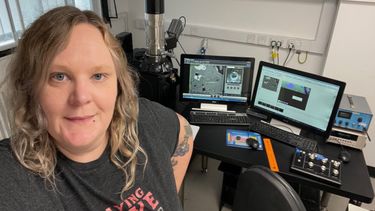The Andrew Sherratt Fund award has enabled me to add important analysis to my PhD research, which would have not been possible otherwise, as a self funded PhD candidate, as well as receive training which will enhance my studies and my professional abilities.
The award was used to gain training in SEM analysis and to conduct SEM analysis to assess compositional and elemental differences on material produced by experimental reconstructions, as part of my PhD research. The experimental reconstructions, tested a theory of how a type of early copper smelting furnace was shaped and used. The analysis of the ceramic furnace and the metal material produced (slag, copper and conglomerate), enabled comparison with material from excavations and helped test this theory even more accurately.
The specific types of furnaces being assessed, come from an isolated region in the Aegean; the peninsula of Attica, the Cyclades and Crete and recent evidence has widened their date of use to include the Final Neolithic through to the Early Bronze Age. Understanding this isolated tradition, which is being carried out at the very early stages for the instigation of copper metallurgy in this region, can help us have a better understanding of the instigation and early transmission of copper metallurgy in the Aegean.
I am very grateful to the Andrew Sherratt Fund, for enabling me to conduct this work and it has made a significant impact to my research.

